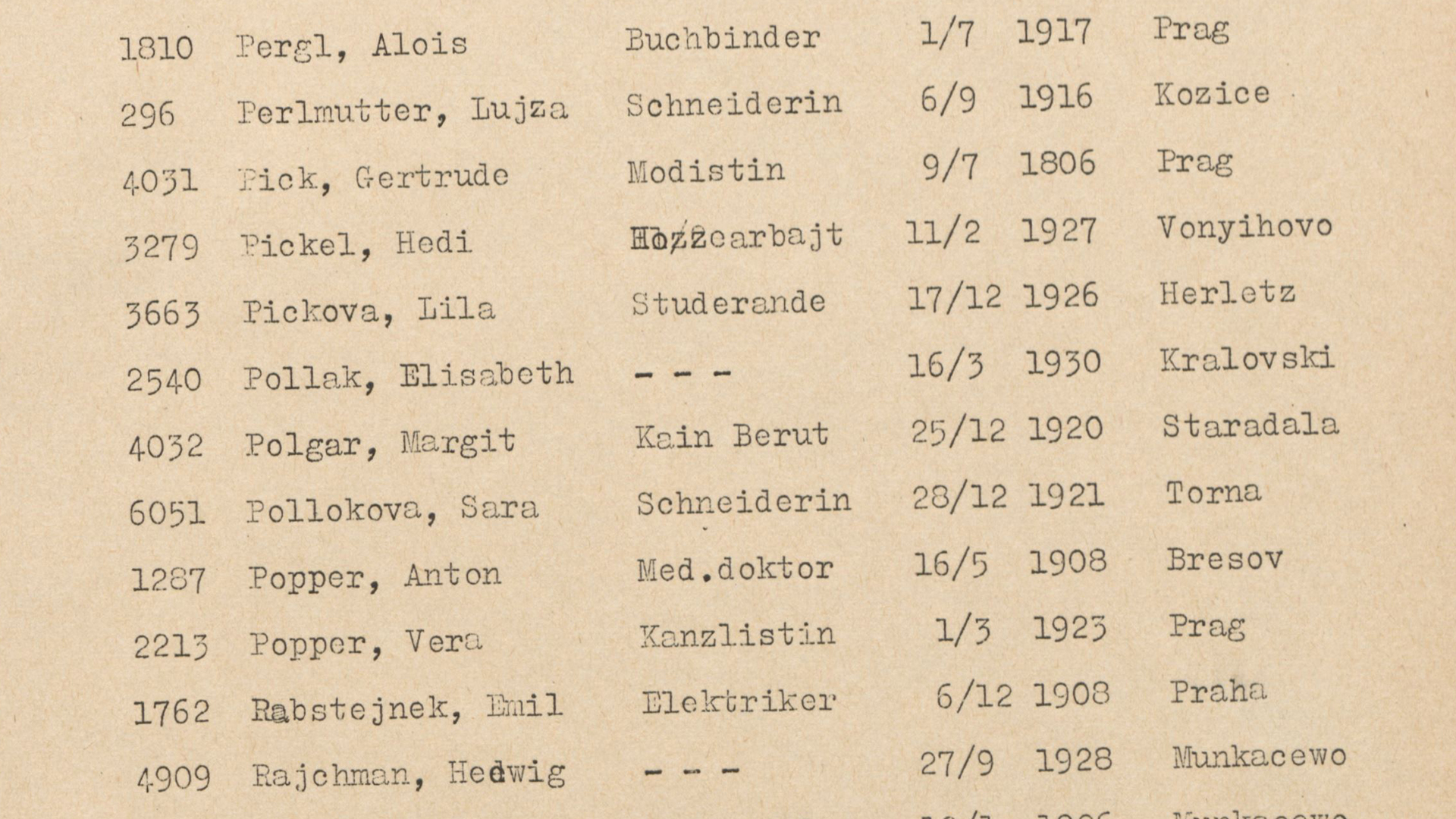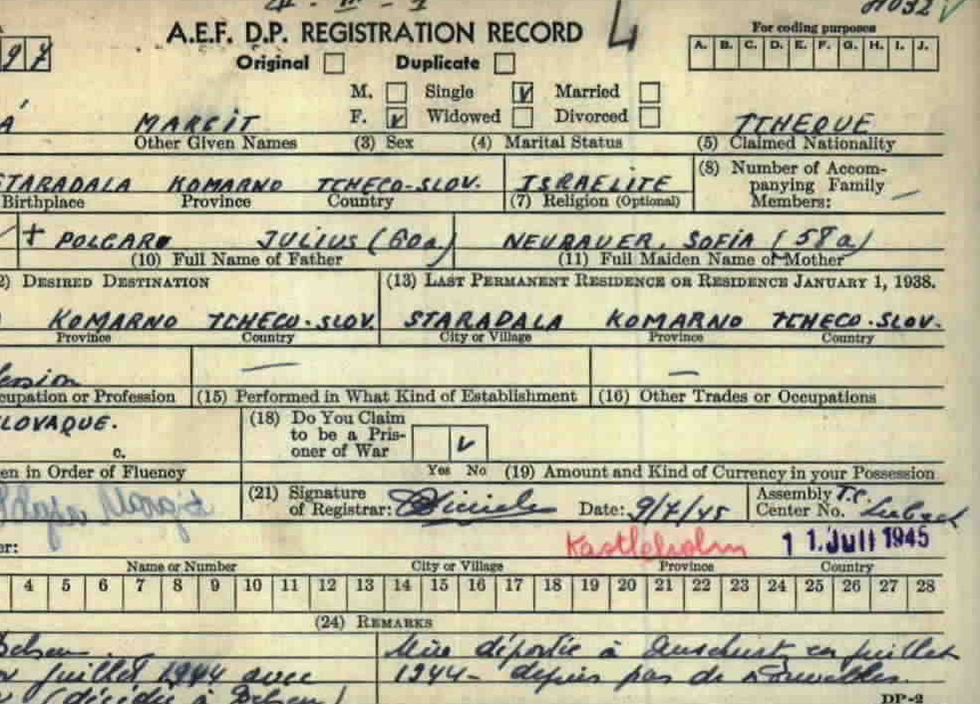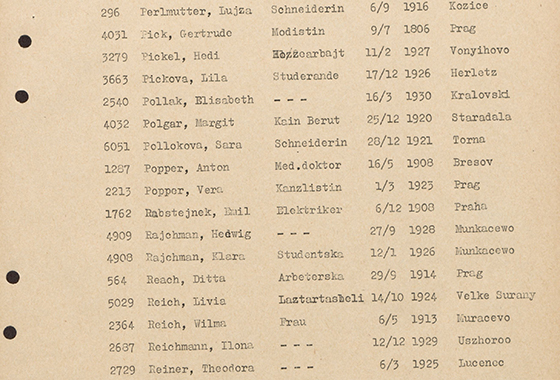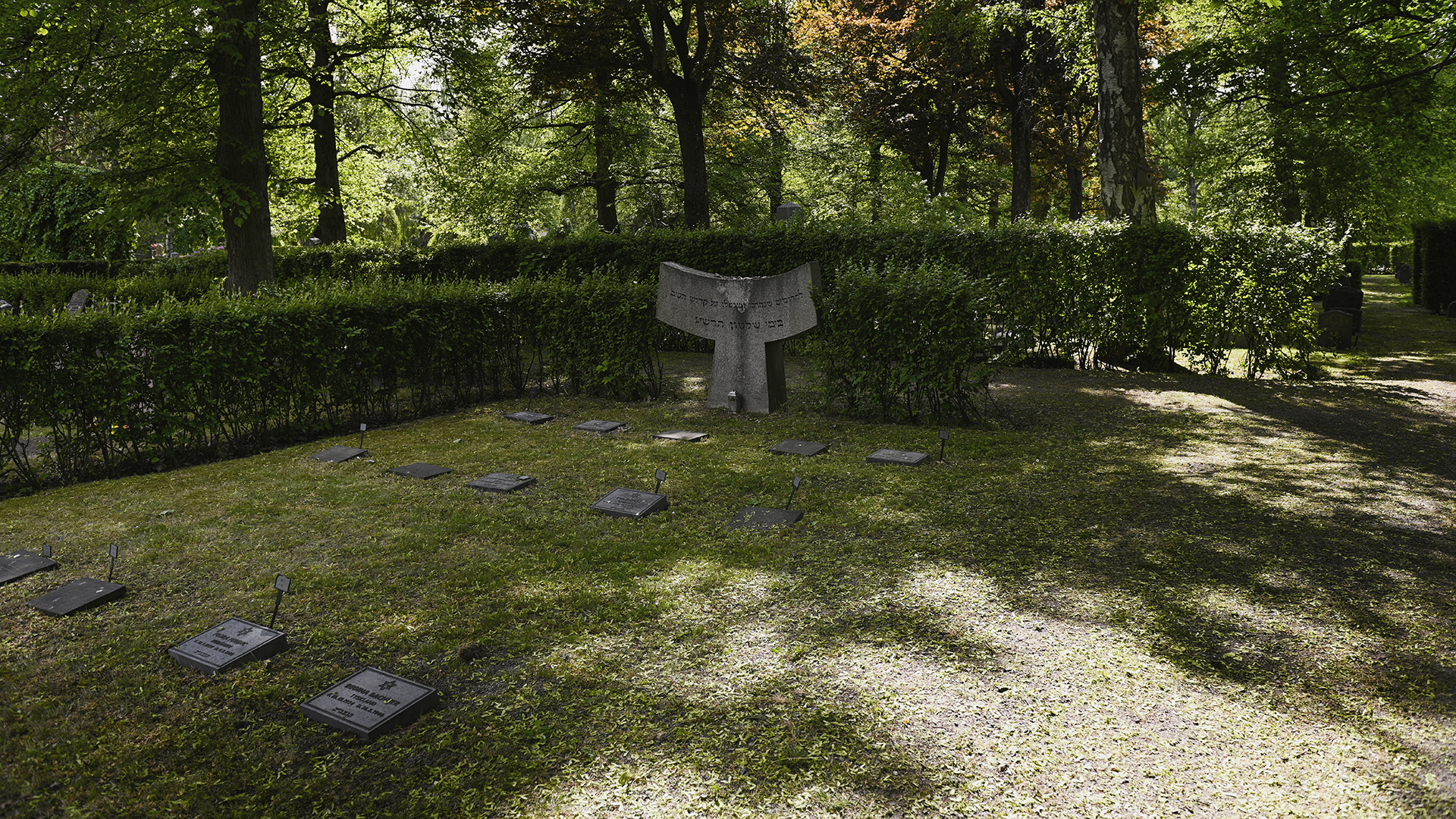Stará Ďala was located halfway between the Slovakian capital Bratislava and the Hungarian capital Budapest, not far from the great river Danube. The town was home to Slovaks, Hungarians and Jews. Margit lived with her mother Sofia and three siblings named Clara, Elizabet and Georg. Together they ran an inn in Stará Ďala. Their father, Julius, had passed away when Margit was 12 years old.
In 1938, when Margit was aged 18, Czechoslovakia had been forced to give up the entire region where Stará Ďala was located to Hungary, under pressure from Nazi Germany. The town now came under Hungarian rule. When war broke out a year later, Hungary allied itself with the Axis powers and Nazi Germany. Jews in Hungary began facing discriminatory, anti-Jewish laws, inspired by the German Nuremberg Laws, They stripped Jews of their rights and prohibited them from holding certain jobs and marrying non-Jews, among other things. The anti-Jewish laws made life difficult for Jews in Hungary, but it was not comparable to what was happening to Jews in Poland, the Baltic States and Ukraine at the time.
As Hungary actively fought for the Axis against the Allies on the Eastern Front, the country began to forcibly recruit most able-bodied Jewish men into labour battalions. These battalions were forced to perform hard and dangerous work, often on the frontline. The Jewish men were subjected to physical violence and brutality in appalling conditions and nearly 30,000 died there. One of those arrested and sent to the labour battalions was Margit's brother Georg, whom she never saw again.
It is difficult to know how life progressed for Margit in the small town during the first years of the war, but it is certain that everything changed in the spring of 1944. Despite severe pressure from the Nazis and its anti-Jewish laws, Hungary had until now refused to deport Hungarian Jews to death. Instead, the Hungarian government had tried to negotiate with the Allies after the Axis powers' heavy losses on the Eastern Front in 1943. Nazi Germany therefore chose to invade and occupy Hungary in March 1944 to stop the peace negotiations. Immediately, the Germans established ghettos in major Hungarian cities where the Jews were forced to live. This was all part of a plan by senior SS leader Adolf Eichmann to murder Hungarian Jews as quickly as possible.
In July 1944, Margit's mother Sofia and one of her sisters were deported first to Auschwitz. They were probably murdered on arrival. The following day, Margit and her other sister were also forced onto one of the railway wagons. The journey from Hungary took several days. From the testimonies of other Hungarian Holocaust survivors, we know that the journeys were pure suffering, in overcrowded wagons without enough air, food and water. Both Margit and her sister survived selection. Nowhere in survivor documentation is it possible to figure out whether it was her sister Clara or Elizabet who was with Margit.
After two months in Auschwitz, Margit and her sister were transferred to the Płaszów concentration camp in Krakow, not far from Auschwitz, where they were forced to work. The camp was notorious for its sadistic commandant Amon Goeth and the enamel factory of the Sudetenland industrialist Oscar Schindler. Just over two months later, the Polgar sisters were sent west to the Gross-Rosen concentration camp, a gigantic system of many small concentration camps, all of which served as satellite camps to the larger one in the village of Rogoźnica in south-west Poland. The sisters were placed in the satellite camp in Gräben to work in one of the many munitions factories that supported the Nazi war effort through slave labour.
After four months there, the Allied forces had begun to approach. Margit and other prisoners were forced to march towards Germany on foot in the bitter cold that lasted into March. The prisoners were severely emaciated by this time and many died of exhaustion, cold or starvation during the long marches, which became known as death marches. Those who could not keep pace were shot dead. Eventually, Margit, her sister and other prisoners were transported to the Bergen-Belsen concentration camp. In the overcrowded and disorganised camp, diseases such as dysentery, diphtheria, typhus, and tuberculosis spread and killed thousands. Margit was severely affected by the death march and developed a severe cough. When she and her sister arrived at Bergen-Belsen, they both contracted typhus. Margit's sister did not survive the disease and died in the camp.
Liberation and time in Sweden
Margit survived both her time in Belsen and typhus, but was weak, coughing and suffering from diarrhoea when the British liberated Bergen-Belsen on the April 15, 1945. At that time, there were over 60,000 prisoners in the camp, most of them Jewish and the majority in a terrible state of starvation and disease. Thousands of dead prisoners were lying unburied in the camp. Margit and other surviving prisoners were moved out of the camp and received medical care. Meanwhile, the Allied forces tried to register all survivors.
Margit was one of over 9,000 survivors who were brought to Sweden for treatment by UNRRA transportation. After a period in the transit camp and the Swedish field hospital in Lübeck, Margit, who still was severely emaciated, was taken to Sweden on the S/S Kastelholm on July 11, 1945, together with Klara Schwartz, Rozsi Hirschl and others. The Kastelholm docked in Stockholm after a four-day voyage. Margit and many of the other seriously ill were immediately transported to the emergency hospital in Sigtuna. When Margit was admitted to the hospital she weighed only 28 kg. The staff noted that she was emaciated, pale and without appetite, suffering from breathing difficulties and hunger oedema (fluid retention associated with prolonged starvation). She is diagnosed with pulmonary tuberculosis. Less than two months later, on the September 10, 1945, at 1:25pm, Margit Polgar died in Sigtuna due to her injuries. She was 24 years old.
Margit wanted to return to her home town of Stará Ďala, possibly to search for her brother Georg, who she thought might have survived. Georg had survived and moved to Israel after the war. He eventually registered his family in Yad Vashem, but from those documents it is clear that he never learnt his sister survived, was taken to Sweden and that she is buried in the Northern Cemetery.
Margit's route
The map shows the places Margit was forcibly transferred or travelled to, from Stará Ďala where she was born to the Northern Jewish Cemetery. Click on the information symbol to see all the locations, listed in chronological order.
About Margit Polgar
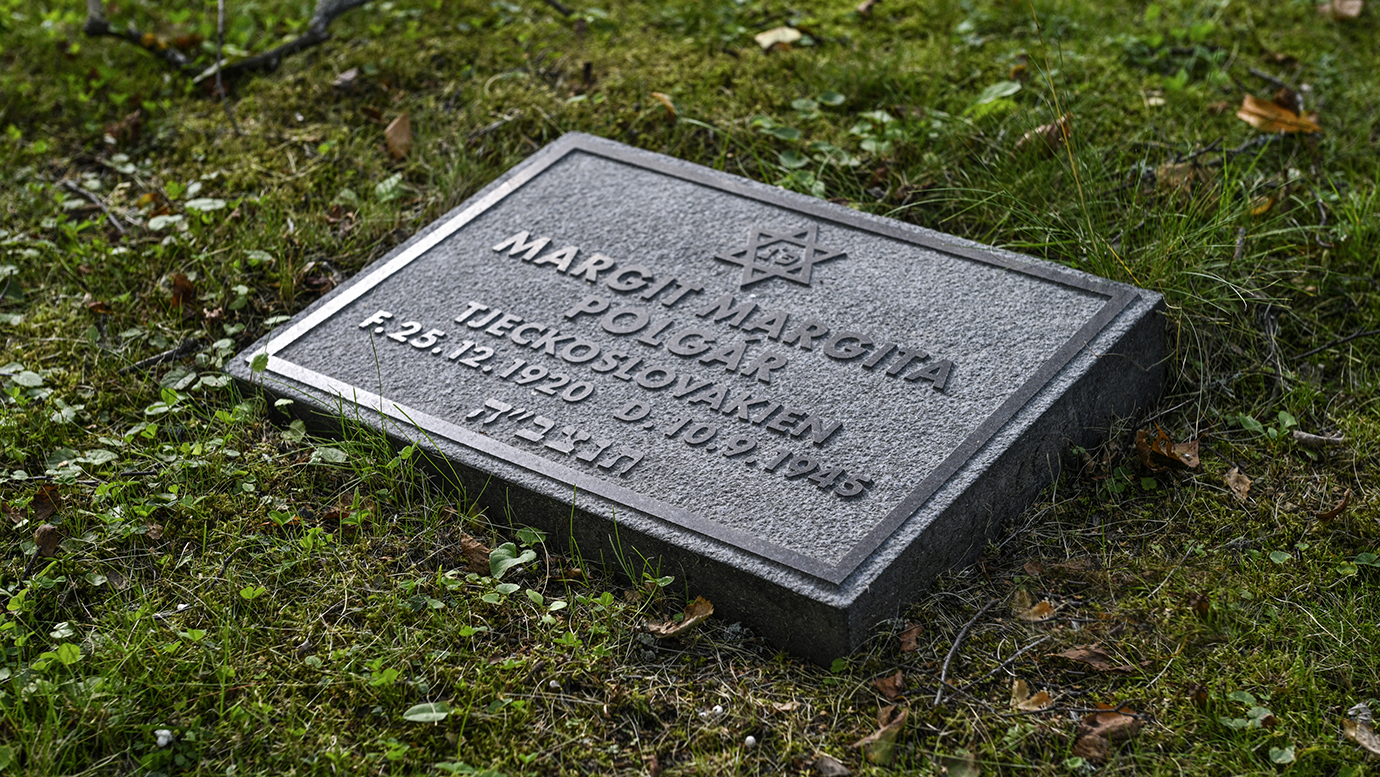
About Margit's mother Sofia Polgar
About Margit's father Julius Polgar
About Margit's sister Clara Polgar
About Margit's sister Elizabet Polgar
About Margit's brother Georg Polgar
Learn more about the fates of other
Here you will find links to the "Förlorade röster" [Lost Voices] collection page as well as links to all the personal texts, listed by surname.
